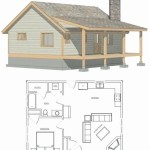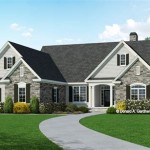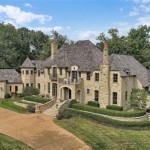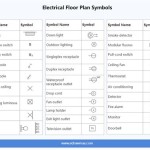Small Tudor House Plans: A Guide to Essential Aspects
Small Tudor house plans offer a charming and distinctive architectural style that combines traditional elements with modern functionality. These plans are popular for those seeking cozy and characterful homes with a historical flair. When designing a small Tudor house, several essential aspects should be considered to ensure a harmonious and comfortable living space.
Exterior Design
Tudor houses are known for their distinctive external features. The steeply pitched gable roof is one of the most iconic elements, often covered in clay tiles or slate. Other characteristic features include timber framing with decorative plaster infill, mullioned windows, and a prominent chimney or chimneys. These elements create a picturesque and inviting exterior that evokes the era of the Tudor dynasty.
Interior Layout
Small Tudor house plans typically feature a compact and efficient interior layout. The main living areas are often on the ground floor, including a cozy living room, a dining room, and a kitchen. The bedrooms and bathrooms are usually located on the upper floors. Small Tudor houses often have a central staircase that connects the different levels, adding to the charm and character of the interior.
Materials and Finishes
Traditional Tudor houses were primarily constructed using timber framing and plaster infill. Today, modern materials such as brick, stone, or siding can be used to recreate the Tudor aesthetic while offering improved durability and insulation. The interior of a small Tudor house often features exposed timber beams, wood paneling, and stone or brick fireplaces. These materials lend warmth and character to the living spaces.
Window and Door Styles
Windows and doors play a vital role in the overall design of a Tudor house. Mullioned windows, divided into smaller panes by vertical mullions, are a signature feature of Tudor architecture. They allow for plenty of natural light while maintaining the historical charm of the house. Similarly, the entrance door is often made of solid wood and may feature intricate carvings or decorative hardware.
Decorative Elements
Small Tudor house plans often incorporate decorative elements that enhance their historical character. These elements may include carved or molded plaster ceilings, decorative plasterwork around windows and doorways, and intricate woodwork. By incorporating these details, the interior of the house gains a sense of authenticity and charm.
Garden and Landscaping
The garden and landscaping play a complementary role in the overall design of a Tudor house. A well-designed garden can create a harmonious transition between the interior and exterior spaces. Traditional Tudor gardens often feature formal elements such as hedges, topiary, and symmetrical flower beds. By incorporating these elements, the garden becomes an extension of the house, adding to its charm and character.
Conclusion
Small Tudor house plans offer a unique blend of historical charm and modern functionality. By carefully considering the essential aspects outlined above, homeowners can create cozy and characterful homes that evoke the era of the Tudor dynasty. From the distinctive exterior design to the charming interior layout, every element of a small Tudor house is an opportunity to embrace the rich heritage of English architecture.

1920 National Plan Service Cottage House Plans Vintage Sims

Tudor Style Model House And Floor Plan Art Print Com Craftsman Plans Vintage

Seattle Homes Tudor Style House Plan Design No 132 1908 Western Home Builder Victor W Voorhees

Tudor Style House Plan 4 Beds 3 Baths 2365 Sq Ft 461 83 Houseplans Com

This Is So Perfect Super Attractive Has A Library Though I Probably Won T Be Needing The Servant Tudor House Plans Vintage Cottage

House Plan 90348 Tudor Style With 2088 Sq Ft 3 Bed 2 Bath 1

Plan 81234 Tudor Style With 2 Bed 1 Bath

20 Tudor Cottage Tiny House Craft Mart

1920 National Plan Service Vintage House Plans Tudor Floor

Tudor Style House Plans Floor








